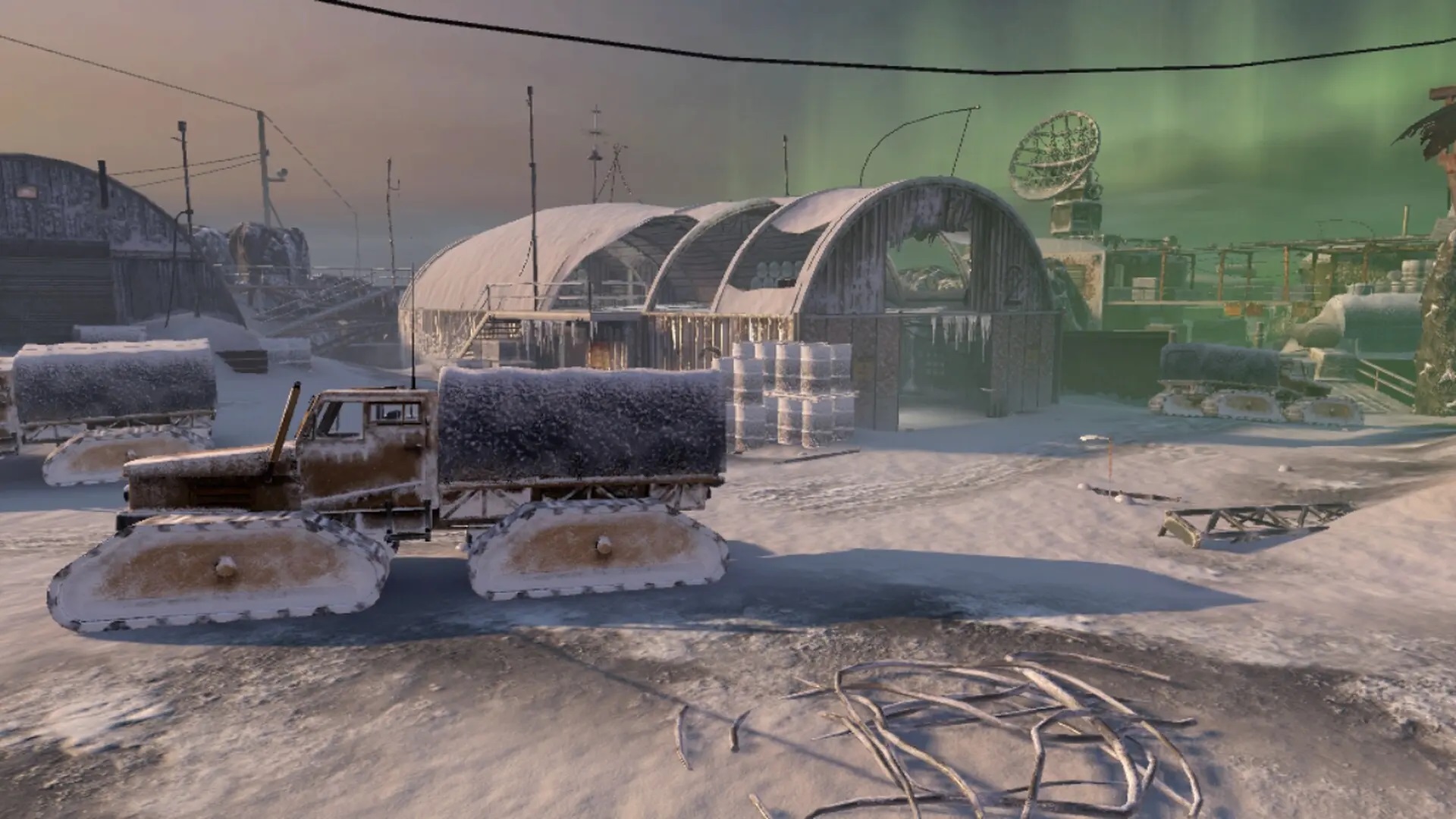Discovery is a multiplayer map from the First Strike DLC in Call of Duty: Black Ops.

Overview
Discovery is set in an abandoned, frozen German research base in Antarctica. Many buildings are based on the Project Nova mission, you can even see a ship in the water that looks very similar to the one from that mission. The only difference is that the mission was set in the Arctic. In the middle of the map there is a deep chasm with a destructible bridge made of ice. The easiest way to take it apart is with a rocket launcher. Additionally, there are two other structures made of ice that also bridge the chasm, but cannot be destroyed. Although weapons that can kill at a long distance work best, you shouldn’t underestimate melee weapons such as submachine guns, because at the bridge that divides the two sides of the map there are many buildings that support melee combat.
Strategies
The player best equips himself with a sniper rifle. Optionally, just lie down in the ice cave, which is located on the south side of the map. You can only enter the cave if you go through the entrance. Both the Variable Zoom attachment and a silencer help on Discovery. Furthermore, you should consider staying by the bridge, where shotguns or the Ballistic Knife will serve you well.
Info
- Discovery was already in development before the game came out and was originally supposed to appear on the main game. In the game files of the CD you can even find a mini-map.
- On the hull of the ship anchored off the coast is written “соусник”, which translates roughly as “gravy boat”.
- On the sides of the buildings there are power switches, which resemble those from the survival fight.
- There are a total of four destructible ice bridges, but you can jump over the gaps with ease.
- Behind the Black Ops spawn point outside the map, you can see a submarine sticking out of the ice.
- On Discovery you can see the Aurora Austrailias, better known as the Northern Lights.
- The entire map appears to be on a large floating iceberg in the middle of the Antarctic Ocean.
- There are several warning signs telling people to watch their steps, plus you can read the word fool.
- Buried in the ice on this map are remains of two German V2 rockets.
- In one of the two buildings connected by the bridge, there is a window on the upper floor that is broken. If you look inside, you can see a cage that looks like something was trapped inside, broken out and freaked out. There are bloodstains on the wall in the room and under the window, so whatever was in the cage was injured when it escaped.
- In one room there is a bed in the middle that is really soaked in blood, there are also test tubes lying around everywhere. This suggests that biological
- experiments on living organisms.
Behind the Spetsnaz spawn point, there are two unusable gunships. - Discovery is the only map that takes place in Antarctica.
Call of Duty
The Call of Duty series has existed since 2003 and in addition to various spin-offs, including for the handheld systems Nintendo DS and Sony PSP, 14 major titles of the series have now been released. Ever since the first part of the series, great emphasis has been placed on the online multiplayer mode in addition to the single-player campaign, which is also reflected in the development of the shooter series. Since the first Call of Duty, World at War, which was developed exclusively by Treyarch, each part also included cooperative challenges that you could play together with friends. The latest installment, Call of Duty: World War II, also features an extended multiplayer mode that puts you and your friends in the combat zones and famous battles of World War II. Using the divisions, you’ll be able to choose between the deadly sniper and the brute armored division and support your comrades in battle. In addition, World War II also has a zombie mode “Nazi Zombies”, as in its predecessor Call of Duty: Black Ops. Face the monsters of the Third Reich and win glory and honor.




